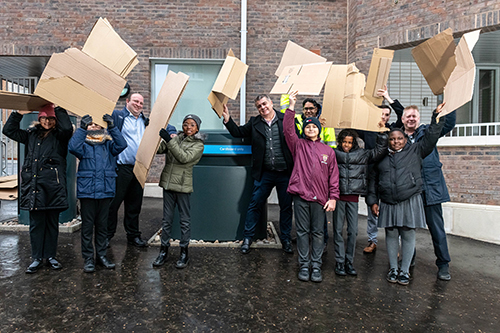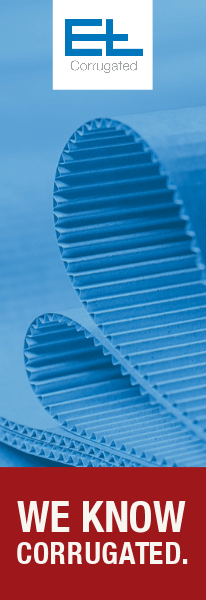Envac, the developer of underground vacuum waste collection, has launched a residential cardboard shredder at Barking Riverside, one of Europe’s largest housing developments.
The move will allow residents from approximately 2,000 homes to sustainably manage large volumes of cardboard waste, preventing around 105 tonnes of cardboard from being sent to landfill annually.
The 88cm wide cardboard shredder, which can shred packaging as large as TV boxes, is one of the largest to be used in a residential environment. It is also one of the first times that residential cardboard collection has been handled by vacuum waste collection in the UK, which will see large volumes of cardboard sucked in an underground pipe network from the shredder to the collection station every day.
The giant cardboard shredder has been connected to Barking Riverside’s existing automated waste collection system. The system and cardboard shredder were specified by Barking Riverside Ltd, a joint venture between L&Q and The Mayor of London, as part of their commitment to embed positive recycling behaviours within the neighbourhood early on. The growing development will offer over 10,000 homes and new facilities on a 443 acres brownfield site on the River Thames in East London.
Launched in 2018, Envac’s system has cut on-street bins by 98% and waste collection-related carbon emissions by 90% by removing the need for on-site waste collection trucks. It currently transports the waste of around 2,000 homes through an underground pipe network via airflow. The system has already had a transformational impact on residents’ recycling rates. During April 2023, 47% of all waste at Barking Riverside was recycled – higher than the London average of 12% for flatted properties.
Barking Riverside’s cardboard waste recycling system is accessed via RFID tags made available to residents. When residents have cardboard waste to recycle, they simply take it to the inlet and feed it through the shredder. When the inlet becomes full, or at pre-programmed times, high-powered fans located in the collection station create negative airflow that ‘sucks’ the waste through the pipes.




